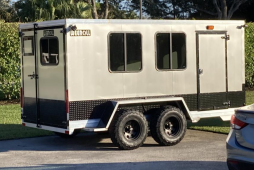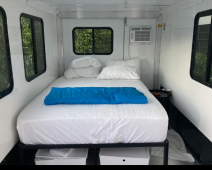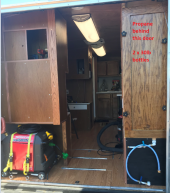Hi all. I am new to this stuff, so bare with me.
I have a 16' cargo trailer I have converted to live in. I am using shore power most of the time, but would like to travel the country and be able to utilize AC. I use a 5000 BTU window AC unit currently. I have some health issues that make me need the option for AC if indeed I can't get shore power and it is too hot out, at least for the sleeping hours.
My understanding is I have two options. Build a unit and place a bunch of LiPO4 batteries into a tongue box of the trailer, or buy a pre configured unit, such as a EcoFlow Delta Pro.
My needs are going to be fairly simple. AC unit(if the weather requires it), occasional laptop and phone charging, a fridge and an occasional use of something like a blender.
My understanding is there are advanced AC units now that work on 12v as well, such as this here: https://www.amazon.com/gp/product/B...c77113de91d8f59b931738ce30e6d#customerReviews
I would just get a $1k honda generator and be done with it but I hate gasoline smells and wouldn't be able to use it in all locations. I am willing to spend 5-6k to get this setup properly. Hopefully you all can guide me in the right direction and let me know if this is feasible. I really appreciate any input. Thanks
I have a 16' cargo trailer I have converted to live in. I am using shore power most of the time, but would like to travel the country and be able to utilize AC. I use a 5000 BTU window AC unit currently. I have some health issues that make me need the option for AC if indeed I can't get shore power and it is too hot out, at least for the sleeping hours.
My understanding is I have two options. Build a unit and place a bunch of LiPO4 batteries into a tongue box of the trailer, or buy a pre configured unit, such as a EcoFlow Delta Pro.
My needs are going to be fairly simple. AC unit(if the weather requires it), occasional laptop and phone charging, a fridge and an occasional use of something like a blender.
My understanding is there are advanced AC units now that work on 12v as well, such as this here: https://www.amazon.com/gp/product/B...c77113de91d8f59b931738ce30e6d#customerReviews
I would just get a $1k honda generator and be done with it but I hate gasoline smells and wouldn't be able to use it in all locations. I am willing to spend 5-6k to get this setup properly. Hopefully you all can guide me in the right direction and let me know if this is feasible. I really appreciate any input. Thanks







